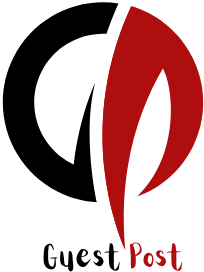Introduction
In today’s competitive digital space, simply producing content isn’t enough. Brands need a focused and strategic content marketing plan to deliver real results. A well-executed plan increases visibility, strengthens brand authority, and drives measurable business outcomes. When done right—with Google’s EEAT (Experience, Expertise, Authoritativeness, and Trustworthiness) in mind—content marketing becomes a powerful long-term asset.
Why a Content Marketing Plan Matters
An effective content marketing plan ensures that your efforts are consistent, data-driven, and aligned with both your brand’s voice and business goals. It allows companies to:
-
Communicate with clarity and purpose
-
Build trust and thought leadership
-
Track progress with key metrics
-
Increase ROI on content initiatives
When properly structured, your plan acts as a blueprint, guiding every piece of content toward meaningful engagement and measurable growth.
Define Your Objectives and Success Metrics
The first step to any winning content strategy is identifying clear, measurable goals. Your objectives will determine your approach, content types, and the channels you’ll use. Common objectives include:
-
Generating qualified leads
-
Building brand awareness
-
Educating customers
-
Driving organic traffic
-
Enhancing customer retention
Establish key performance indicators (KPIs) for each goal—such as page views, conversion rates, bounce rates, or engagement scores—to measure success and guide your efforts.
Know Your Audience Deeply
To connect with your audience effectively, you must understand who they are and what they care about. Build detailed audience personas that include:
-
Demographic information
-
Pain points and challenges
-
Buying behaviors
-
Preferred content formats (videos, blogs, infographics, etc.)
Use tools like Google Analytics, social media insights, and direct customer feedback to inform these personas. A deep understanding of your audience results in content that is more targeted, more relevant, and more likely to convert.
Audit Existing Content
Before you launch a new strategy, evaluate what you’ve already produced. A content audit helps you identify:
-
Top-performing content worth updating or repurposing
-
Underperforming pages that need improvements
-
Gaps in topic coverage
-
Opportunities for SEO enhancements
Categorize content based on format, performance, and relevance. This ensures your future strategy builds on what’s already working while addressing missed opportunities.
Build a Smart Content Strategy
With clear goals and an understanding of your audience, it’s time to create your content framework. Your strategy should include:
-
Core themes that align with your brand’s expertise
-
Targeted keywords based on search intent
-
Content formats suited to your audience’s preferences
-
A realistic publishing schedule
Your content calendar should plan for various formats—how-to guides, case studies, videos, podcasts—and should be revisited monthly to stay agile.
Optimize for Search Engines
If your content can’t be found, it won’t perform. SEO is non-negotiable for any effective content plan. Best practices include:
-
Performing thorough keyword research
-
Optimizing meta tags, headlines, and image alt text
-
Using internal links to improve navigation and authority
-
Structuring content for featured snippets and voice search
SEO is not a one-time task—it should be integrated into your writing, updating, and distribution processes consistently.
Promote Your Content Effectively
Publishing great content is just the beginning. You need a distribution strategy to get it in front of the right audience. Effective methods include:
-
Sharing via social media platforms
-
Sending content through personalized email campaigns
-
Repurposing articles into videos or infographics
-
Partnering with influencers and thought leaders
You can also extend your content’s reach through digital marketing Raleigh services that specialize in local audience engagement and advanced targeting.
Track Results and Analyze Data
No strategy is complete without tracking performance. Use tools like Google Analytics, SEMrush, and HubSpot to monitor:
-
Organic traffic growth
-
Time on page and bounce rate
-
Lead generation and conversion metrics
-
Social shares and engagement
Use these insights to identify what’s working and what needs refinement. Continuous learning from your data is what will keep your content strategy ahead of the curve.
Refine and Evolve
Content marketing is not static. As your business evolves, so should your content strategy. Regularly revisit your:
-
Goals and KPIs
-
Target audience personas
-
Content calendar and topic focus
-
SEO performance and search trends
Feedback loops, competitor insights, and algorithm updates should inform your adjustments. This iterative process ensures your content remains competitive and relevant.
Bonus: Leverage Local SEO and Backlinking
If you’re a business looking to capture a local market, especially in competitive regions like North Carolina, you should invest in location-focused strategies. Partnering with experts in internet marketing Raleigh can boost your visibility in local searches, driving high-intent traffic and conversions.
Backlinking to relevant, trusted sources like this also builds your site’s authority, improves SEO performance, and meets Google’s trustworthiness signals.
Final Thoughts
A winning content marketing plan doesn’t happen by accident—it’s the product of strategic planning, consistent execution, and continuous improvement. From defining your goals and knowing your audience to auditing content and distributing with precision, every step plays a crucial role in your brand’s digital success.
Incorporate Google’s EEAT framework at every stage of content development to build trust and visibility. And if you’re aiming to scale your strategy, local expertise—like digital marketing Raleigh services—can be the edge you need in a competitive digital environment.











































